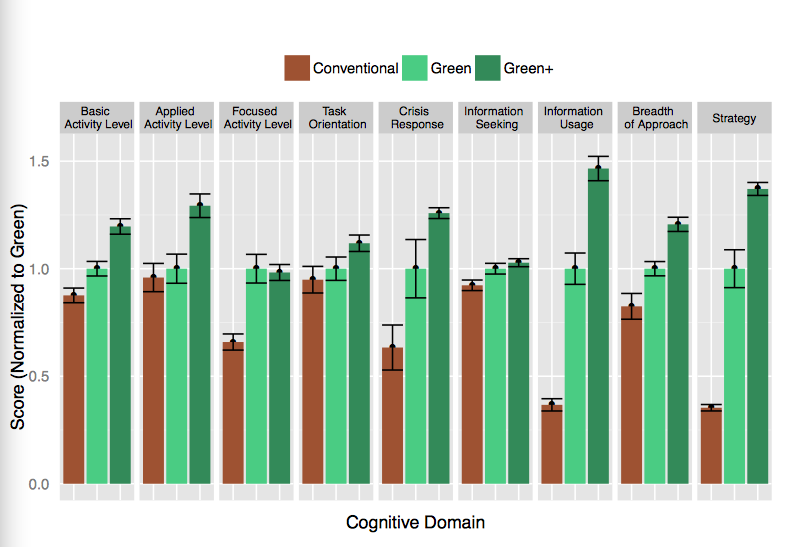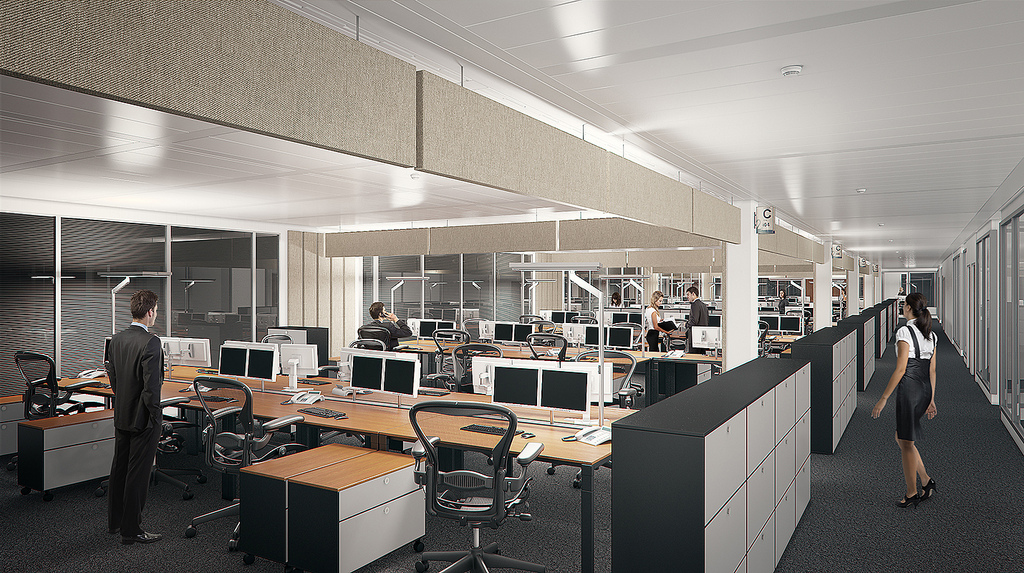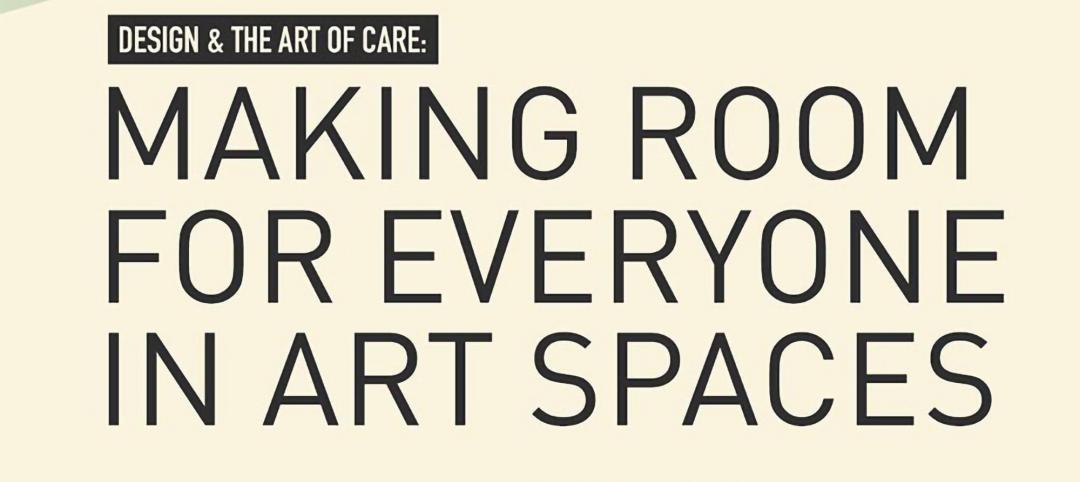Experts, including those in the AEC community, who have been insisting for years that indoor air quality affects occupants’ performance and health could soon have more ammunition to back up their claims.
The Wall Street Journal reports that Washington University at St. Louis last summer initiated what will be a yearlong experiment to test whether a newly constructed building, designed with easy access to stairways, natural daylight, and other “wellness” features, improves employees’ physical well being and promotes worker collaboration. The Journal also reports that the Well Living Lab, a research facility near the Mayo Clinic in Minnesota, early next year will begin clinical trials designed to assess indoor environments, with the goal of creating healthier spaces.
On October 26, Environmental Health Perspectives—a monthly journal of news and research published with support from the National Institute of Environmental Sciences (NIES), the National Institutes of Health, and the U.S. Department of Health and Human Services—released in advance of publication a peer-reviewed paper that details a recent study of 24 participants—architects, designers, programmers, engineers, creative marketers, and managers—who spent six full workdays in an environmentally controlled office space, blinded to test conditions.
The study population was restricted to non-sensitive persons by excluding current smokers and people with asthma, claustrophobia, or schizophrenia.
On different days, the participants were exposed to Indoor Environmental Quality (IEQ) conditions with high and low concentrations of volatile organic compounds (VOCs) that were representative of office buildings in the U.S. Additional conditions simulated a Green building with a high outdoor air ventilation rate and artificially elevated carbon dioxide levels independent of ventilation.
The study found that, on average, the participants’ cognitive scores were 61% higher on Green building days and 101% higher on days when the air ventilation was highest (so-called Green+ days), compared to the air quality during “Conventional” building days. “These findings have wide-ranging implications because this study was designed to reflect conditions that are commonly encountered every day in many indoor environments,” the study’s authors state.
 A recent study tested the cognition of 24 participants for nine activities, based on different levels of indoor air quality exposure. “Conventional” was air quality that's typical of most office buildings; Green+ indicated the highest level of air ventilation.
A recent study tested the cognition of 24 participants for nine activities, based on different levels of indoor air quality exposure. “Conventional” was air quality that's typical of most office buildings; Green+ indicated the highest level of air ventilation.
The study took place over two weeks in November 2014 at the Willis H. Carrier Total Indoor Environmental Quality Laboratory at the Syracuse Center for Excellence. The lab had two nearly identical office environments located adjacent to one another, each with 12 cubicles.
Cognitive assessment of the participants was performed daily using the Strategic Management Simulation software tool, a validated, computer-based test designed to test the effectiveness of management-level employees through assessments of higher-order decision-making.
The study found that the largest effects of conditions on cognition were seen for Crisis Response, Information Usage, and Strategy. For Crisis Response, for example, scores were 97% higher for the Green condition compared to the Conventional, and 131% higher for participants during Green+ days.
Conversely, “we found statistically significant declines in cognitive function scores when CO2 concentrations were increased to levels that are common in indoor spaces (approximately 950 ppm). In fact, this level of CO2 is considered acceptable because it would satisfy ASHRAE’s ventilation rate guideline for acceptable indoor air quality,” the authors state.
The paper, whose six authors worked under the auspices of NIES, was reviewed and approved by the Harvard T.H. Chan School of Public Health Institutional Review Board. The participant group was 42% male, 58% female. One-third of the group was between the ages of 20 and 30, and 25% was between the ages of 41 and 50. Ninety-two percent of the group was Caucasian, 54% has a college degree, and 63% holds professional jobs.
Related Stories
Healthcare Facilities | Aug 10, 2023
The present and future of crisis mental health design
BWBR principal Melanie Baumhover sat down with the firm’s behavioral and mental health designers to talk about how intentional design can play a role in combatting the crisis.
Higher Education | Aug 7, 2023
Building a better academic workplace
Gensler's David Craig and Melany Park show how agile, efficient workplaces bring university faculty and staff closer together while supporting individual needs.
Office Buildings | Aug 1, 2023
Creating a nurturing environment: The value of a mother’s room in the workplace
Since becoming an architect, Rebecca Martin of Design Collaborative has drawn a mother’s room into numerous projects. But it wasn't until she became a mom that she fully appreciated their importance in the workspace.
Designers | Jul 25, 2023
The latest 'five in focus' healthcare interior design trends
HMC Architects’ Five in Focus blog series explores the latest trends, ideas, and innovations shaping the future of healthcare design.
Adaptive Reuse | Jul 6, 2023
The responsibility of adapting historic university buildings
Shepley Bulfinch's David Whitehill, AIA, believes the adaptive reuse of historic university buildings is not a matter of sentimentality but of practicality, progress, and preservation.
Headquarters | Jul 5, 2023
The game room: Transforming game design office spaces
IA Interior Architects' designers discuss the aesthetic considerations for gaming industry work environments.
Office Buildings | Jun 28, 2023
When office-to-residential conversion works
The cost and design challenges involved with office-to-residential conversions can be daunting; designers need to devise creative uses to fully utilize the space.
Performing Arts Centers | Jun 20, 2023
Designing arts spaces that curate inclusivity
GBBN's Julia Clements and Marcene Kinney, AIA, LEED AP, talk tips for designing inclusive arts spaces.
Office Buildings | Jun 5, 2023
Office design in the era of Gen Z, AI, and the metaverse
HOK workplace and interior design experts Kay Sargent and Tom Polucci share how the hybrid office is evolving in the era of artificial intelligence, Gen Z, and the metaverse.
Higher Education | May 24, 2023
Designing spaces that promote enrollment
Alyson Mandeville, Higher Education Practice Leader, argues that colleges and universities need to shift their business model—with the help of designers.

















